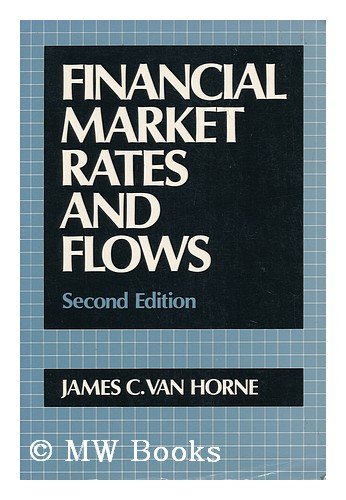Items related to Financial market rates and flows

"synopsis" may belong to another edition of this title.
This book continues to be about interest rates, how they behave with changing market conditions, and how risk can be managed. We are concerned not only with primary securities, like Treasury and corporate bonds, but with derivative securities, like forward and futures contracts, debt options, swaps involving interest rates, credit and currencies, and mortgage derivatives. We will see also that embedded options in a bond or mortgage-backed security, like call and prepayment options, can be valued and option-adjusted spreads can be determined. Finally, our concern is with the management of a fixed-income portfolio and the tradeoff between risk and expected return.
Throughout, a rich body of theory is examined, as are the empirical evidence and practice that bear on the theory. The first half of the book is devoted to the foundations for understanding interest-rate behavior: market equilibration, funds flows between financial markets, mathematics of bond and moneymarket yields, inflation, maturity, coupon rate, default risk, and bond price volatility. The remaining chapters use these foundations to explore a variety of derivative securities and their uses, the influence of taxes on interest-rate differentials, and the social allocation of capital. The institutional backdrop is presented in conjunction with concepts, risk, and practice—not as separate chapters. I believe this approach is more lively than the chapter-by-chapter institutional descriptions seen in most books.
Because of the rapid change in interest-rate practice and theory, this edition represents another substantial revision. By chapter, the important changes follow. All data in chapter 2 on the flow of funds have been updated, and a new section is added on the total debt outstanding for various major sectors of the economy. Chapter 3, Foundations for Interest Rates, has been streamlined and cut back in places. The empirical parts of chapter 5, Inflation and Returns, have been substantially reworked, and the section on inflation-indexed bonds and Treasury TIPS is largely new. Significant changes appear in chapter 6, The Term Structure of Interest Rates; these changes deal with modeling the term structure, as well as with relevant empirical work. Bond portfolio management, with respect to duration and convexity, has been strengthened in chapter 7, and the arbitrage efficiency between zero-coupon and coupon bonds is illustrated with an actual situation.
Perhaps the greatest changes occur in chapter 8, Default and Liquidity Risk. A new section is included on liquidity, and substantial changes have been made in the treatment of credit ratings, default losses and migration patterns, quality yield spreads over time, high-yield debt, and yield spreads with respect to maturity. The chapter also has been resequenced. Chapter 9, the first of several derivative securities chapters, contains 4 new section on forward contracts. In addition, implied repo rates are explained. Chapter 10, Derivative Securities: Options, includes a new treatment of interestrate cap, floor, and collar valuations using "caplets" and "floorlets." A new section on interest-rate corridors also has been developed. Chapter 11, Derivative Securities: Interest-rate and Credit Swaps, contains an entirely new section on credit derivatives, an important market that is continually developing. Also in this chapter is a new section on pricing an interest-rate swap, and an example is presented. The chapter has been reorganized in other ways as well, and the treatment of secondary market values is expanded.
Chapter 12, Embedded Options and Option-Adjusted Spreads, includes a new section on putable bonds and their valuation. The section on empirical evidence bearing on the call feature has been largely reworked. Chapter 13 on mortgage securities has been completely rewritten to reflect important changes in mortgage-backed securities. Overhauls of the treatment of mortgage derivatives, modeling prepayments, and to-be-announced (TBA) pricing are evident. Chapter 14, Controlling Currency Risk, has new sections on the Euro currency, on foreign-bond portfolio management, and on emerging market debt. Finally in chapter 15, The Influence of Taxes, the treatment of municipal bonds has been substantially reworked to explain better the nature of the market and the valuation of municipals in relation to taxable bonds. Throughout, the book has been thoroughly reviewed and updated. Only the more substantive changes are mentioned here.
Financial Market Rates and Flows can be used as a foundation text or as a supplement for courses in fixed-income securities, money and banking, money and capital markets, investments, financial risk management, and financial institutions. In addition, it is useful to those in the financial community, in business, and in government who are concerned with investing in or issuing fixed-income securities.
James C. Van Horne
Palo Alto, California
"About this title" may belong to another edition of this title.
- PublisherPrentice-Hall
- Publication date1978
- ISBN 10 013316182X
- ISBN 13 9780133161823
- BindingPaperback
- Number of pages241
- Rating
(No Available Copies)
Search Books: Create a WantIf you know the book but cannot find it on AbeBooks, we can automatically search for it on your behalf as new inventory is added. If it is added to AbeBooks by one of our member booksellers, we will notify you!
Create a Want
